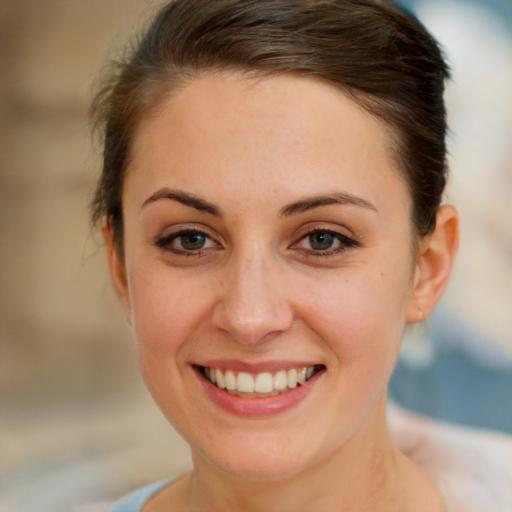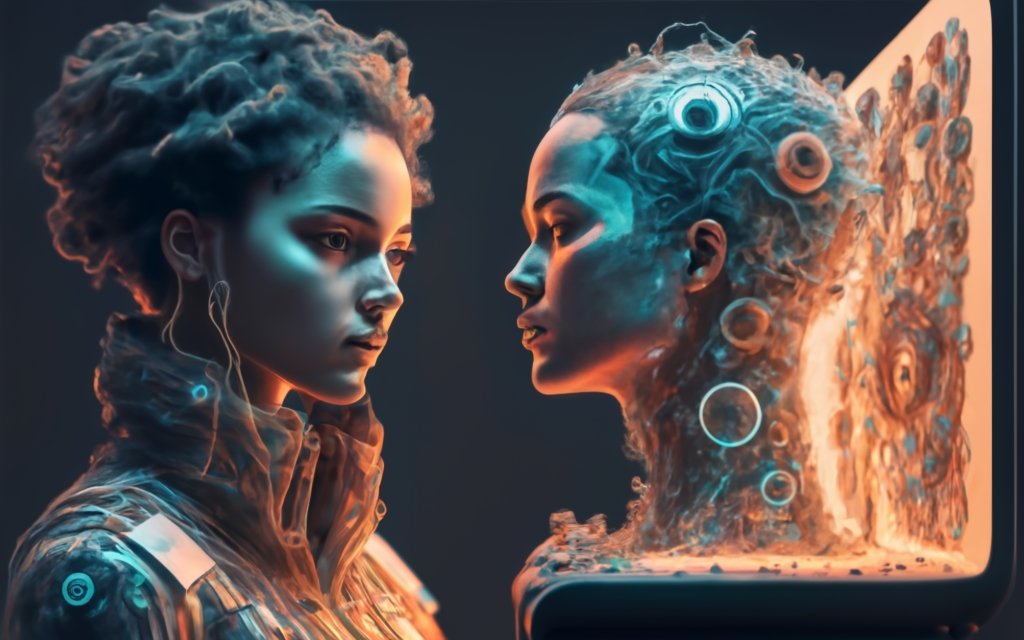Art has evolved dramatically from brushstrokes on canvas to pixels on screens. This analysis explores key differences and similarities in how traditional painting, digital photography, and AI-generated art capture creative visions. We examine the roles of human artists versus algorithms and implications for understanding art itself.
Traditional Painting: The Art of Brushes and Human Touch
Painting relies entirely on the human creative process. Artists manually apply physical paints to tactile canvases using brushes and other tools. This hands-on approach allows direct manipulation of textures, colors and forms while leaving traces of the artistic journey like visible brush strokes. Famous painters like Van Gogh and Monet developed unforgettable artistic styles by pioneering specialized techniques like impasto and pointillism that demonstrated pure creative vision. Such innovations show how human insight pushes painting as an art form. The act of painting connects artist to artwork in a profoundly hands-on human way.
Photography: Capturing Reality through Code
Unlike painting, photography depends on technology to mechanically capture optical reflections of reality. Early cameras used light-sensitive chemicals while modern digital photography employs electronic image sensors and programming techniques like computational photography. Complex algorithms drive decisions about focus, dynamic range, perspective, and noise reduction largely automatically. This automated pipeline aims to faithfully represent real scenes rather than apply interpretative human vision. Photographers like Ansel Adams created innovations like exposure stacking to overcome technological limitations and bring out harder-to-see details. The creative potential thus emerges from mastering the camera’s technical capabilities.
YouTube Bots: The Rise of Automated Artistic Expression
Recently, AI algorithms have gained creative capacities, generating original poems, songs, paintings and more. YouTube bots demonstrate this by algorithmically remixing existing content or producing novel artifacts like music. Bots can synthesize captivating lyrics and audio by learning patterns from vast datasets. However, fully automated generation lacks human creative vision or intent. For example, an AI bot can produce appealing pop songs sharing features with mainstream hits but conveying no deeper meaning. Their creation requires huge data/compute rather than skill or struggle. While informationally dense, bot-made songs fail to resonate emotionally.
| Medium | Primary Creative Force | Tools and Techniques | Resulting Artistic Style |
| Traditional Painting | Human creativity and vision | Brushes, paints and canvas, unique techniques like impasto | Distinct creative styles exhibiting artistic choices |
| Digital Photography | Computational photography algorithms | Cameras, programming methods like exposure fusion | Representational images aligned with optical reality |
| YouTube Bots | Machine learning algorithms | Big datasets, neural networks, generative AI | Novel audio/lyrics lacking human creative vision |
The Intersection of Art and Technology: A Historical Perspective
The interplay between art and technology has evolved for centuries, from early mechanical tools to emerging digital mediums. The camera obscura enabled accurately tracing projections to inform painting. Later, pioneering photography mechanized the capture process, seemingly threatening painting. In response, many painters like Picasso incorporated photographic elements into works, exemplifying the repeated story of technology expanding possibilities while requiring artistic adaptation. Recently, digital tools grant creators far greater editing latitude. Meanwhile, AI algorithms can generate novel artifacts sparking debates around computer creativity. Understanding this historical progression clarifies why photography values representation while algorithmic art excels mainly at novelty over meaning.
The Future of Artistic Expression: Collaboration or Competition?
Emerging AI creative capacities provoke important questions around future human-machine relationships. Some envisage an impending clash as AI threatens to automate creative jobs. However, AI still fails at profound human capacities like intention, empathy and wisdom which seem necessary for higher forms of artistic expression. For example, computer-generated art captivates through novelty but lacks purposeful vision. This suggests an alternative future of collaboration and co-creation. AI could help actualize human visions more efficiently while handling production tasks. Early cooperative paradigms like AI photo colorization demonstrate this by requiring initial human input then accelerating output. Overall while AI will displace some artistic roles, the future remains ambiguous holding both collaborative promise and competitive risk.
The Role of AI in Preserving and Enhancing Artistic Skills
Beyond creating art, AI could provide tools for preserving artistic traditions and enhancing human skills. As masters expire, tacit knowledge around ancient brush technique styles fades despite their vast expressive range. AI systems can help digitally codify such ephemeral expertise into shareable archives and teaching resources. For instance, intelligent stroke extraction algorithms can determine signatures of specific techniques by analyzing masterworks. Students then learn to mimic subtle aspects like wispy brush textures or flowing calligraphic forms programmatically. Thereby AI can systematically augment and enhance human creative potential after deeply analyzing elements fundamental to effectively conveying artistic visions.
Navigating the Legal Landscape of AI-Generated Art
The growing prevalence of AI-generated art introduces complicated legal questions around copyright, ownership and liabilities. Since AI systems currently lack legal personhood, creators are accountable for artistic output despite having limited control over unpredictably generative models. However formally claiming possession of an AI-generated work could enable profiting from others’ digitized labor when exploiting datasets ignores rights-related duties around derivative works or fair use exemptions. Updating legal frameworks for assigning accountability and clarifying ownership issues poses an urgent challenge still being negotiated within existing structures. For now, responsible practices include attribution and seeking explicit consent where possible while limiting commercial usage rights.
The Importance of Human Creativity in the Age of Automation
While AI systems exhibit narrow, brittle creativity eclipsing humans at informationally-dense tasks, qualities like intention and emotional resonance definitively set human artistic expression apart. At best, machine creativity optimizes novelty through recombinatory methods without resonating personally. Yet cultural works valued for authenticity channel unique struggles into cathartic visions through which audiences find deeper identity. Such vicarious yet lived understanding seems intrinsically tied to the mystery of conscious existence – something no algorithm can sufficiently replicate despite advances. So while collaborative futures undoubtedly emerge, AI should enhance human creativity without replacing that profoundly human need for empathetic experiences expressed inventively.
How AI Shapes Artistic Creation
AI stands to really change creative fields by both helping and competing with humans. On the assistive side, AI can streamline tedious stuff so artists can focus on big picture vision. Musicians use AI to quickly generate accompaniments or edit sounds. Visual artists apply style transfers to effortlessly reimagine works in different styles and formats. Game developers lean on AI to crank out asset variations. By removing barriers, AI also lets amateurs casually create. But AI also directly competes as its own creative force, threatening jobs and art’s value. While AI art wows with novelty, it lacks true vision and meaning. But it can churn out endless variations informed by data at inhuman scales. So from partner to rival, AI is guaranteed to fundamentally transform artistic creation through many, often opposing, applications.
Looking to the Creative Future
From early tools to current generative models – technology has always expanded artistic horizons while challenging assumptions. As algorithms get their artificial hands dirty, embracing them means moving traditions forward, not losing what makes us human. Avoiding short-sightedness lets us nurture AI’s collaborative spirit. This evolution needs flexible laws and education so we don’t stifle progress through fear. If we responsibly credit both human and machine contributions, AI becomes less a threat and more a promise to amplify culture. Uncertainty around rights and relationships will persist. But thoughtfully engaging with that nuance serves us better than reactionary tactics that could limit creative frontiers. The appeal of an emerging creative alliance with AI far outweighs automation anxiety. We must bravely lean into promising creative futures where bold technology meets boundless imagination.
In the ever-evolving landscape of content creation, Ultrabot.io emerges as a premium solution, offering a user-friendly platform to boost your video engagement. With ultrabot.io, creators can effortlessly send unlimited views, subscribers, and likes to any video, tailored to their preferences. This versatile bot provides a seamless experience, allowing you to shape your video’s visibility and impact precisely the way you envision it. Elevate your content strategy with Ultrabot.io and unlock the full potential of your videos in the digital realm.

Jaida Hauschildt is a contemporary artist known for her captivating and thought-provoking works of art. With a background in fine arts and a passion for exploring the intersection of traditional and modern artistic techniques, Jaida brings a unique perspective to visual art.
